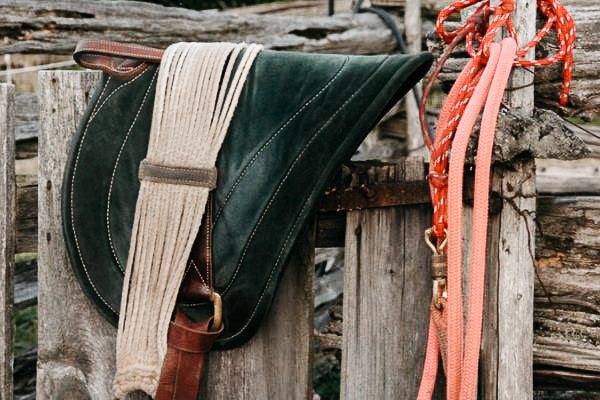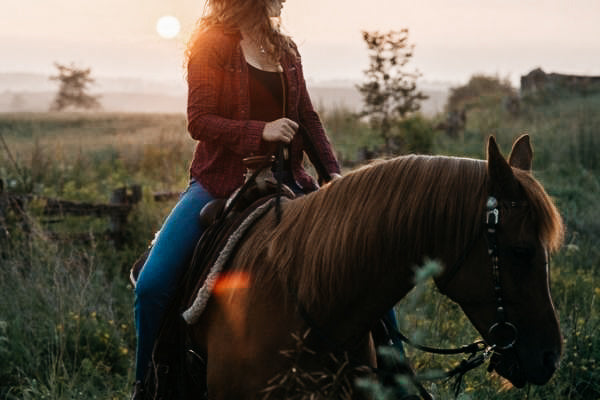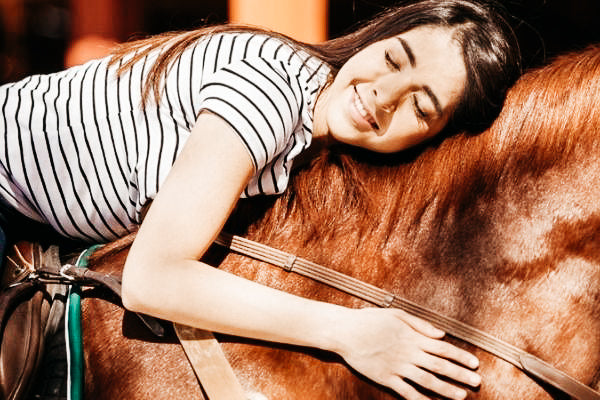
Riding pads
A saddler would probably throw his arms above his head if you asked him about a good riding pad. No protection for the horse's back, no support for the rider, how can a harmonious coexistence be found?
Other horse people are very enthusiastic about riding pads and fur saddles. You want a natural feeling on the horse's back, you want to feel every movement and the pad gives you a little more support than when riding without a saddle.
Where lies the truth now? Is a riding cushion or a felt saddle harmful to the sensitive horse's back?
The answer to this, as with many topics in the horse world, is: It depends on you and your horse and what you plan to do with the riding pad. What models and types are there and what are the respective areas of application? The riding pad, pad or bareback pad means the same thing, namely treeless saddles that are attached to the horse's back with a strap. The riding pad is available with stirrups and without.
The fur saddle is a treeless pad padded with lambskin. Lambskin has the advantage of absorbing sweat and being antibacterial. The fur also provides additional cushion and protects the horse's back. There is this riding pad with stirrups, but you should use it without them, because the stirrups can cause pressure peaks and this would stress your horse and damage his back if you were to ride with stirrups in the long term.
The fur saddle is well suited for short training sessions where you want to train your seat and replicate your horse's movements. Furthermore, the pad is very comfortable.
In contrast to the fur saddle, the felt saddle has a shaped inlay made of various foams. This inlay keeps the rider upright and protects your horse from too much pressure. The girth is attached in a way that is gentle on the horse and the horse's withers do not receive any pressure. Since the felt saddle does not use stirrups, no pressure is built up on the horse's back.

It is a good alternative for seat training and a harmonious riding experience if you know your horse well. Riding a young, stormy horse with a saddle like this wouldn't be a very good idea because you need a firm seat.
The ride on pad from Barefoot is also very popular when it comes to short, back-friendly exercise sessions. This pad has the advantage that it has a V-strap, which distributes the pressure of the rider's weight across the entire pad. The ends of the straps are secured with so-called patches that are filled with sheep's wool and prevent the strap from chafing.
Are treeless saddles now the future of riding and can you send your saddler home again?
Of course saddles have their place, a pad cannot replace a well-fitting saddle. Keep in mind that some conditions must be met in order to ride with a riding cushion. On the one hand, your horse should be well muscled and you should not have a rider weight of more than 90 kilos. Remember that this is a general value because every horse and every rider is different. Listen to your horse, he will tell you whether he is comfortable with the pad or not.
If you want to go on long rides, you should not use a ride on pad, but switch to a saddle, just as you would for very intensive training. However, a bareback pad is a good alternative if you want to work on your seat and balance or want to feel your horse's muscle movement.
Even young horses can be gently accustomed to the rider's weight using the pad. And of course, a well-fitting pad can bridge the time until the saddler finds the right saddle for your horse.
Discover more posts

Trail riding – holiday enjoyment on horseback
Is there anything nicer than roaming through forests and fields with your four-legged partner, traveling through valleys and exploring new landscapes in the saddle every day? Waking...
Continue reading
Riding therapy – help with special power
Since around 450 BC. BC In the years of the well-known Hippocrates, we knew about the beneficial value of the horse's movements on human health. The profound, healing effect takes place due to...
Continue reading
